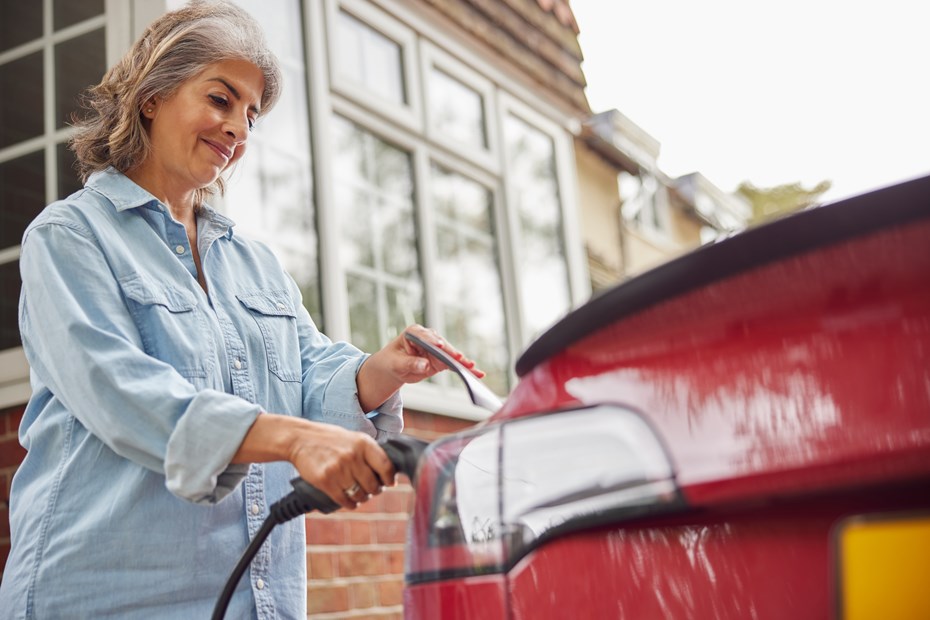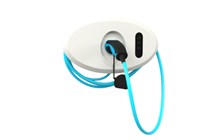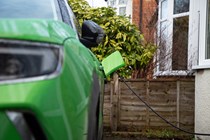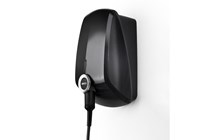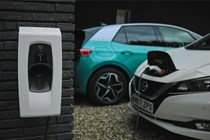Charging an electric vehicle (EV) at home might be your next project. Since data from Parkers shows the average cost of public electric car charging prices are on par with diesel, drivers looking to transition to electric power may have had second thoughts. Householders in flats and rented accommodation are already limited to street charging, portable chargers and community charging points.
If you have off-road parking, however, there are plenty of benefits to make it worth installing an electric car charger for home. Since July 2022, all new home developers are required to build homes with chargers pre-installed so, for starters, you’ll future-proof the value of your home.
What’s more, in June 2022, new legislation came in to effect requiring all home and workplace chargers to have ‘smart’ capabilities. Charlie Cook, the founder of Rightcharge, a site that helps EV drivers install a chargepoint and save money on their energy bills, said,
‘Overnight charging is best for our planet, our pocket and our electricity grid. It cuts energy bills by hundreds per year per household, uses electricity that is 25% cleaner and avoids the need to spend billions of pounds on upgrades to our national grid.‘

Cook added, ‘If all drivers have smart chargepoints that can schedule charging for the cheapest times of day, then our grid will require billions of pounds less in investment to be fit for a 100% EV world. The millions of home chargepoints that will be installed this decade are a piece of national infrastructure. How well that infrastructure works will be dictated by the decisions of millions of individual homeowners.’
This guide will help you understand the implications of installing a home chargepoint. We’ll cover off the following topics and if there’s anything you’re particularly interested in, you can use the link to jump straight to that content.
How much does it cost to install a home electric car chargepoint?
Prices vary. The cost of home electric vehicle chargepoints starts at £700 for device and installation and can easily top £1,000 for the newer devices. While it’s not an especially cheap do, you can also monetise your chargepoint to offset some of the costs.
Drivers can recoup the cost of their charger, plus installation, in as little as one year if they are charging on an EV-friendly tariff. For example, Kia EV6 drivers can save £717 per year by making proper use of a smart EV charger and EV tariff.
Smart Home Charge’s Danny Morgan said: ‘You can recoup the cost of the chargepoint installation in as little as one year when you combine a smart EV charger with an discounted tariff, such as Intelligent Octopus from Octopus Energy. This is where a smart home charger comes in handy as it allows you to schedule your EV charging to coincide with the cheaper rate.’
What features are important in a home EV chargepoint?
Earthing Rod
Anyone who has seen Jurassic Park knows electricity is dangerous to mammals when not managed correctly. For decades, our homes have been grounded by multiple earthing points, channelling current into a neutral place, in the event of a fault. In the early days, home electric vehicle chargepoints required a spiky length of copper, known as an earthing rod, to be buried deep into the ground, risking a pierced water pipe.
Since 2017, Pod Point has used technology to mitigate the need for an earthing rod, helping homeowners to avoid costly damage to unseen cables, while offering protection from electrocution. This literally life-saving technology detects and monitors the live voltage between the neutral and live circuits and isolates the vehicle from the charger, if a fault develops.
Several chargepoint manufacturers provide devices that don’t require earthing rods now, including myenergi and ROLEC.
Fuse Protection
EV charging points are now smart enough, through online connectivity, to detect when a vehicle is getting close to the limit where the power would trip the fuse switch and shutting down to mitigate the possibility of fusing.
Chargepoints from Indra, Easee, myenergi and Zaptec are some of the providers offering this safety feature.
Lock
Not every chargepoint is lockable, but if you’re worried about security in your area, you might wish to opt for an electric vehicle home chargepoint that can be locked. Usually, the lock is controlled by a smart phone app.
BP Pulse is one of the providers offering this kind of protection.
Remote control
Being able to remotely control your chargepoint offers you the utmost convenience, since you can enable various features through the connectivity in the smartphone app. Being able to schedule when your charger begins charging the car gives you the freedom to charge at cheaper periods of the day and being able to open the port, which offers you the option to let someone borrow the charger without you needing to be home.
Smart control
Smart control differs slightly from remote control. Although it offers many of the same features, Smart control can also enable third parties, such as your energy provider, to control the chargepoint. Unsurprisingly, most companies are pushing smart charging points, since they offer more versatility, if and when bi-directional charging becomes more common.
Bi-directional charging
The National Grid has worked hard to understand what kind of additional demand EVs will bring to the Grid at peak times, but bi-directional charging may alleviate some of the pain. This is where the car is used as a battery, charged during off-peak hours, or when there’s plenty of solar generated that needs ‘using’ immediately. That energy is then called upon by the Grid at peak times, perhaps being bought back at a higher price than it was sold. Thus, in some instances, EV-based households may be able to make further savings on their energy bills.
Solar integration
If you’re a homeowner that has, or intends to get, solar panels installed to offset some of the cost of your energy bills, that would be smart. In order to get the best of both worlds, you’ll want an electric vehicle charging point that will integrate seamlessly with your solar panels. This will enable the vehicle to maximise use of power generated by solar.
Andersen, Indra and myenergi home chargepoints offer this feature.
Speed
The fastest charge isn’t always the best. Home chargers tend to be 3kWh or 7kWh but if your home has three-phase supply, you may be able to install a 22kWh point. The higher the wattage per hour, the bigger charge that’s delivered in a shorter time. However, it’s important to protect the vehicle’s batteries and so the car may limit the power of charge it can accept to mitigate any degradation of the battery capacity.
Tether
When you rock up to rapid public charging points, the chances are the device is corded and you just have to open the charge port and plug in. With slower charging points, there’s often a requirement to whip out your own cable, as the device is untethered. Home chargepoints can operate in the same way. You can choose if you want the cord integrated into the device or whether you want the freedom to plug in your own independently.
Can I install my own electric vehicle charging point?
Unless you’re a qualified electrician, you shouldn’t install your own chargepoint. Ultimately, you’re dealing with electricity, which can be fatal if handled incorrectly. There’s also the added complexity in ensuring that any faults which develop with the chargepoint don’t affect the rest of the electricity supply to the house.
The top companies for manufacturing and installing EV chargepoints
The key brands in the electric car charger for home market are Andersen, BP Pulse, Easee, EO, EVBox, Indra, Ohme, Tesla, Wallbox and Zaptec. Each brand has a different unique selling point, so deciding which point is best for you, is about working out which suits your lifestyle best.
Andersen
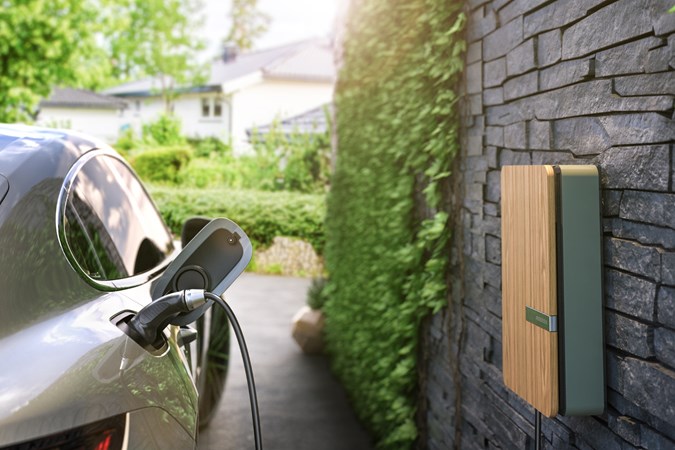
Made in the UK, Andersen has set about to create stylish chargers with intelligent connectivity to offer users the most flexibility. The sleek design integrates the tethered cable. Compatible with most car makers, including Citroen, Hyundai and Polestar, Andersen’s A2 home chargepoint comes with free over-the-air (OTA) software updates, so your experience with your chargepoint is always improving.
BP Pulse
The BP Pulse Homecharger 7 starts from £1,049, including installation, connection and a three-year warranty. Working with a wide range of car makers, including BMW, Jaguar and Vauxhall, BP Pulse offers tethered or socketed units, connecting to a smart app, for a clear view of the battery’s status and setting up a schedule.
Easee
The Easee One is a 7kW charger specifically designed for the UK domestic market, with 4G connectivity. Boasting ‘lightning-intelligence’, Easee emphasises its focus on connected security. It has the in-built earthing technology, meaning there’s no need to drive an earthing rod into the ground. The device automatically detects what power the vehicle requires and manages it appropriately. Committed to aesthetics, Easee also enables you to change the cover of the chargepoint if you change the colour of your car or house.
EO
EO has the EO Basic, EO Mini Pro and Mini Pro 2. In June 2022, it released the EO Mini Pro 3, which is the latest version and will take over from the Mini Pro 2. Admired for its compact design and available in a choice of colours, the Mini Pro 3 has EO companion smartphone app enabling motorists to manage, monitor and schedule electric vehicle charging sessions. It innovates on the previous design by supporting both 7kW and 22kW power delivery.
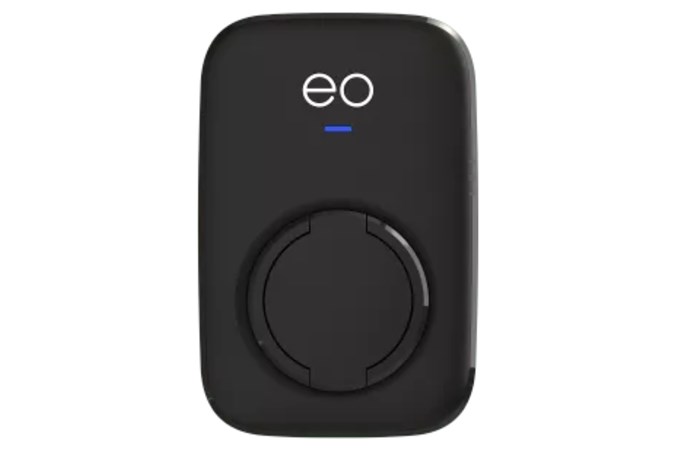
Although EO doesn’t provide earthing rods built in but advocates the use of Garo earthing technology to avoid using an earthing rod. It also offers a locking feature to prevent others using it.
EVBox
EVBox provides a lot of commercial chargepoints so it’s no surprise that it’s one of the companies offering a 22kW home charger to those households that have the capacity. Weather- and shock-proof, the EVBox isn’t the most compact design, but is neat enough, with a cable tidy for the tethered cord. The software management tool enables remote control of the point and gives charging insights, alongside automatic adjustments to manage the load from the grid.
Indra
Indra offers the Smart Pro and Smart LUX and has solutions for homeowners looking to give back to the Grid or power parts of their home using their electric car. The Smart LUX comes in at £1,199, but includes in-built integration with the cheapest and greenest tariffs, including Type of Use, Time of Use and Agile tariffs with potential annual savings of up to £830 compared with other home charger brands. It’s compact, too, with a profile of 78mm, it is the slimmest charger on the market, appealing to those who might have limited installation space or just want a more slimline unit on their house.
myenergi
myenergi’s Zappi is Britain’s best-selling EV home charger for solar integration. If that’s one of your requirements, the Zappi will definitely make the shortlist. An intuitive, smart EV charger, pricing for the Zappi starts from £695.
Ohme
Integrated with your energy tariff to take advantage of cheap charging times, the Ohme home charger is very popular with EV drivers. There’s a smart display screen on the charger so you know what’s going on at-a-glance. Of course, there’s also an app, which will control the Ohme Home, Ohme Home Pro or Ohme Go. Prices start from £449, so Ohme solutions are appealing to those on tighter budgets.
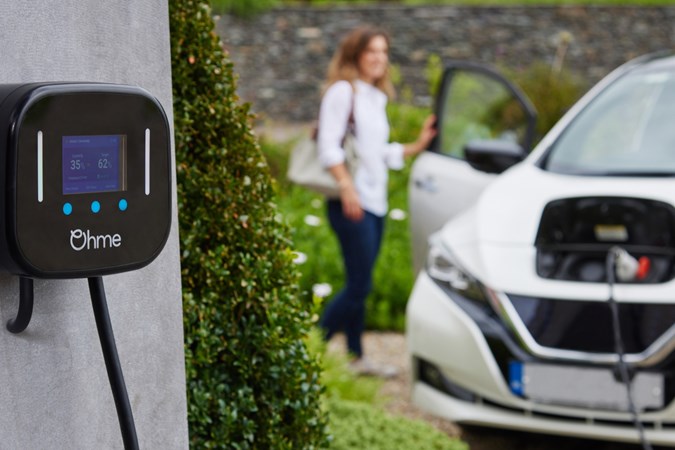
In April 2022, Ohme announced a partnership with the Motability scheme, aiming to make it easier for differently abled drivers and occupants to make the switch to electric. Then in October 2022, the brand became part of the Vauxhall and Octopus Energy partnership.
Pod Point
One of the longest established electric vehicle charging providers in the UK, Pod Point offers both residential and commercial chargepoints. Its home charging solution starts from £799 fully installed. Offering the most compatibility with the widest range of car brands on this list, there’s a choice of 3.6kW, 7kW or 22kW power devices. There’s remote and smart control, enabling montoring, scheduling and load balancing to manage your home charging without hassle.
ROLEC
ROLEC’s Wallpod EV:Home Smart is just £899 fully installed. The Wallpod EV: Home Smart has built-in earthing technology to ensure maximum safety. A choice of either 3.6kW or 7.2 kW power device, there’s also a choice of tethered or socketed chargepoints. Manufactured in the UK, the ROLEC also integrates with the ev.energy app, which enables smart control of the home charger. ROLEC has a mobile charger for smaller businesses and can offer devices for caravan hook-ups too.
Tesla
There’s no denying Tesla’s approach has been the most holistic, incorporating a Supercharging network into the sales of its futuristic cars. The future has now arrived and presently, you can get a Tesla Gen 3 Wall Connector from £449. Featuring OTA updates and a tethered cable so you don’t need to mess on getting the vehicle cable out, the charging speeds vary, depending on the vehicle.
Wallbox
With prices starting at £1,200, Wallbox solutions are the pricier ones, but with the OZEV grant can be more attractive for Tesla or Audi customers, which are the only two brands Wallbox currently supports. With devices to support a range of preferences, from bi-directional electric vehicle charging, to smart display screens, the Wallbox solutions are stylish too.
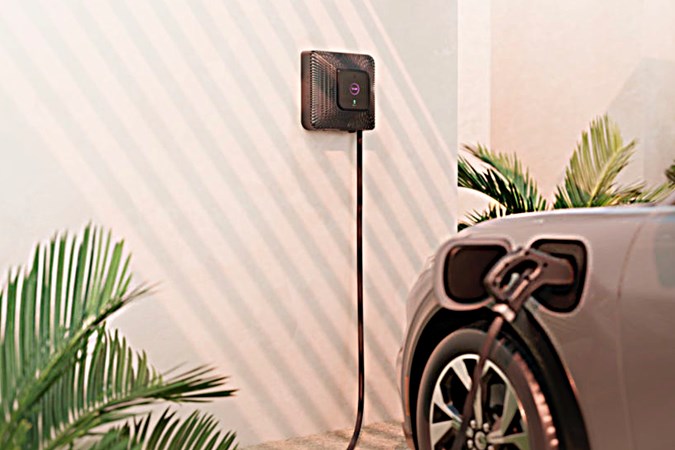
Zaptec
Zaptec’s stylish Scandi design couples with Nordic technology to create a compact, visually-pleasing chargepoint, capable of 22kW power. The Zaptec Go is the size of a tablet and available in a range of colours to make it blend or stand out, as desired. Some 80% smaller and lighter than other chargers on the market, Zaptec is keen to emphasise that, like its rivals, it can be remotely controlled so charging can be done when tariff prices are much lower and updates remotely to stay relevant to the market.
Can you get your charging point installed for free?
In short, no. Once upon a time, car makers would have assisted with the cost of the device and installation. However, as electric cars have become more popular, such incentives have become too costly.
The Electric Vehicles Homecharge Scheme (EVHS), also known as the OZEV (previously OLEV) grant, which sees the government put up to 75%, capped at £350, towards the cost of getting an electric vehicle charging point installed, came to an end for homeowners in March 2022. Anyone not living in a flat or rented properties can continue to benefit from the scheme and Scottish residents can still seek assistance from the Charge Scotland programme.
In order to meet the criteria, the charging point must be fitted, signed off by the installation company and submitted to the DVLA before you can claim the money back. And all of that needs to be done before the deadline.
Why is it so expensive to install an EV home charger?
The cost of EV charging point installation isn’t cheap. The initial cost means switching to an electric vehicle requires a lot of expense upfront. What’s more, some providers charge a nominal monthly subscription (£5 or so) to maintain the software interface that enables you to schedule charges, integrate solar panel production, etc.
Because the technology is so nascent, it’s pretty pricey. What’s more, these fancy devices tend to have some levels of connectivity with Wifi or 4G networks. You may have read about the semiconductor shortage, which is impacting all electronic device manufacture at present. It’s keeping the price of electric vehicle charging devices high, and since they need qualified electricians to install them, the cost is really expensive.
In coming years the price will drop, not least because from July 2022, all house builders were mandated to provide EV chargepoints at every new home.
Just so you know, we may receive a commission or other compensation from the links on this website - read why you should trust us.


